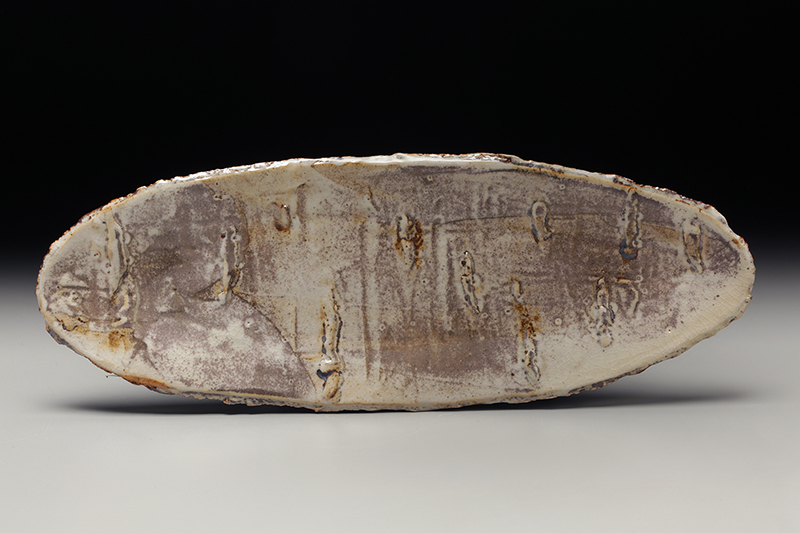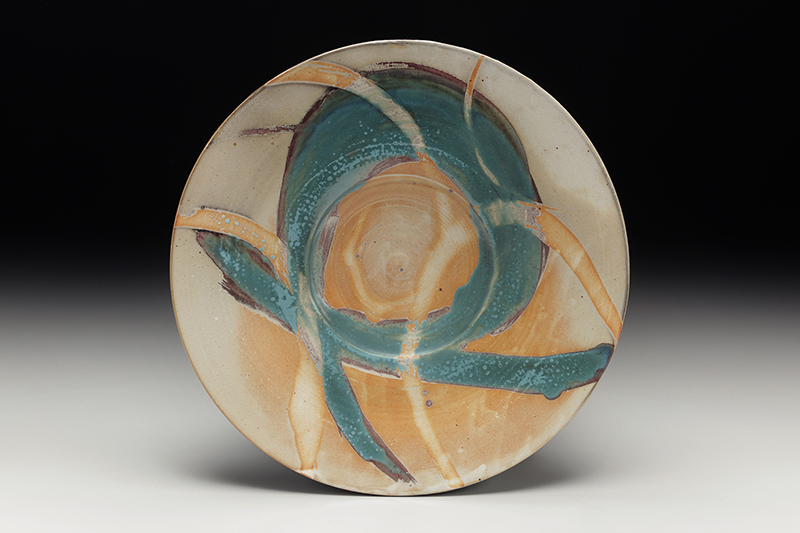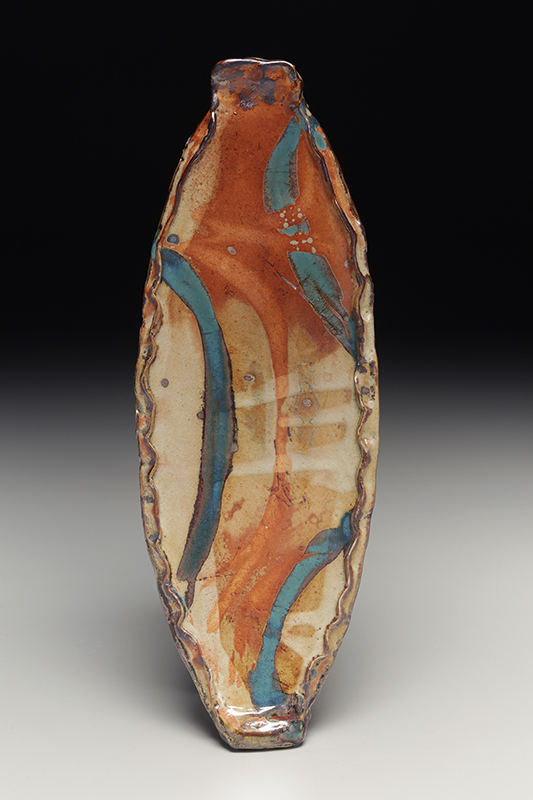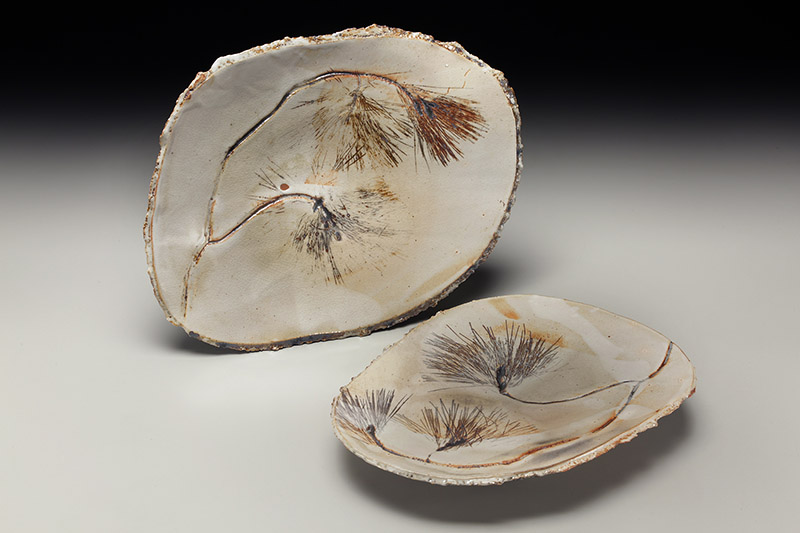Hi, I'm Catharine Healy. I'm here at Mark 1st Fire Arts Studio. I'm going to share with you this amazing story about carbon trapping Shinos and how I discovered them a couple years ago.
My first discovery with carbon trapping Shinos, I found that I kind of really liked Shinos, because they're a Japanese glaze, started following that. What happened was, I had done the typical, I dipped the glaze. One dip here, I turned it over, I did two dips there on the top. I did a wax-resist stroke with my Japanese brushes on this piece right here. I left it, it was a windy day, and left it out in the wind. I saw all this frosty looking formations forming. I asked my friend Olivia, I said, "Olivia, what do you think about that?" Because I was going to dip another glaze on it. I said, "I don't think I'm going to dip another glaze." She was like, "Yeah, yeah, yeah, don't dip it."
This is what came out. It was amazing, because what came out was this one glaze and wax, but it looks like I did a lot of stuff to it. But this is a just wonderful example of carbon trapping. See all that wonderful grayish accent all over the place. If it doesn't have the carbon trapping, it looks like that. It was amazing discovery which captivated me. So I did more exploration with it.
This is one of the next pieces I did, but I did kind of put another glaze, another Japanese glaze called Oribe. So I did my wax strokes and I did this around like that, which it turns out this bluish color. But all this extra gray and kind of purpley tone that comes out, that was all because of carbon trapping. Excuse me. Amazing discovery.
Here's another case of the Shino. This is a Shino that doesn't have extra colorant, called Redart. But this is carbon trapping. This is a different kind of clay body, where I intentionally stretched the clay a little bit more. Then you can see all this texture that soaked up the carbon trapping. So I thought that was really cool. This is a teapot that I made. It has the same Shino glaze. It was actually a version of the Malcolm Davis carbon trapping Shino and wax, but this was fired in a wood kiln. [inaudible] I think it was in Josh Copus' wood kiln. He's out in West Asheville. Or western, I don't know, maybe it's Marshall, or something like that. Excuse me.
I was experimenting with making bigger pieces. I don't know, I just intuitively thought, "Let me do the same technique that I did for these and put the wax-resist strokes." Of course, it was a bigger piece, so I needed to have a bigger brush and more dramatic approach. My brushstrokes are really quick. You don't get a second chance. I like to see brushstrokes look like they have energy. That's what was required here, then I did the same Oribe glaze that was on this and just went over it. Every time you do this, it's kind of a surprise, in a way. That's what I like about it. But I got all these extra gray tones, enhancements, because of that drying aspect, the carbon trapping dynamic that happens with this type of Shino glaze. When I first saw this, I opened up the kiln and I saw this, I just couldn't believe it. My name for this ... it's interesting because Mark 1st Fire Arts, the title of this piece I would call is Fire Wave.




